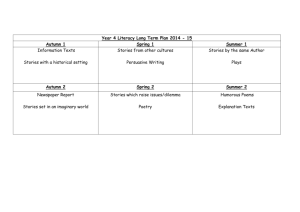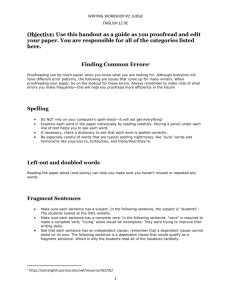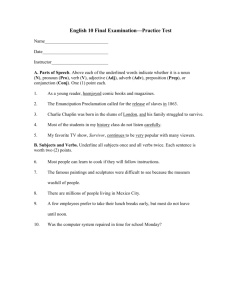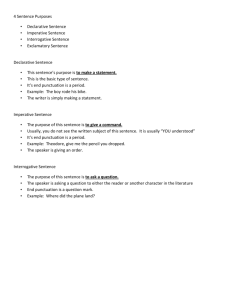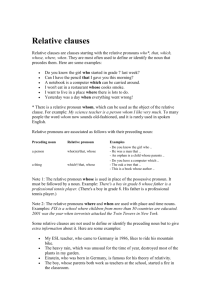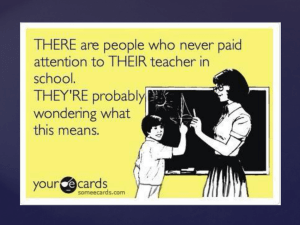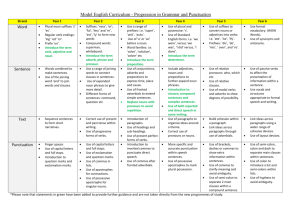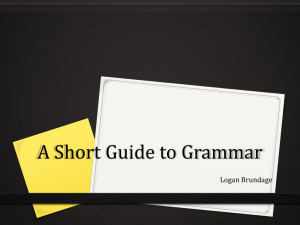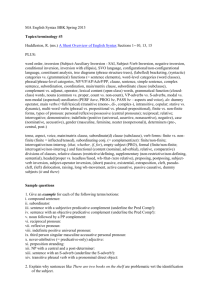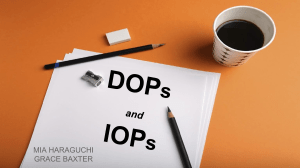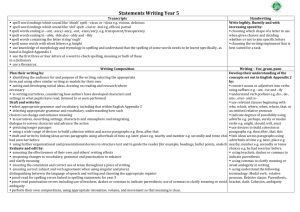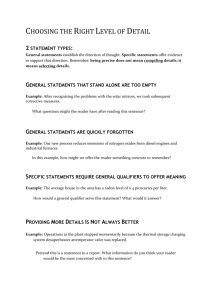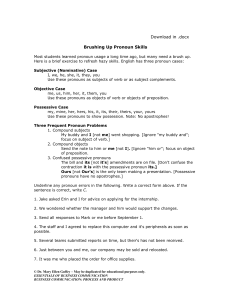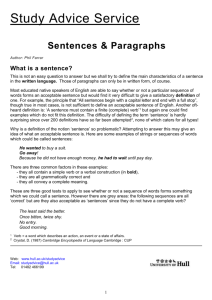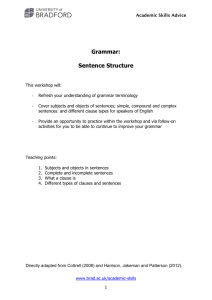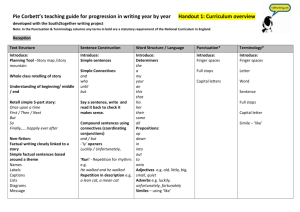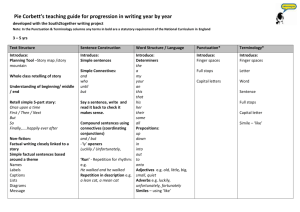2015 - 2016 LT Literacy Plan Y4
advertisement
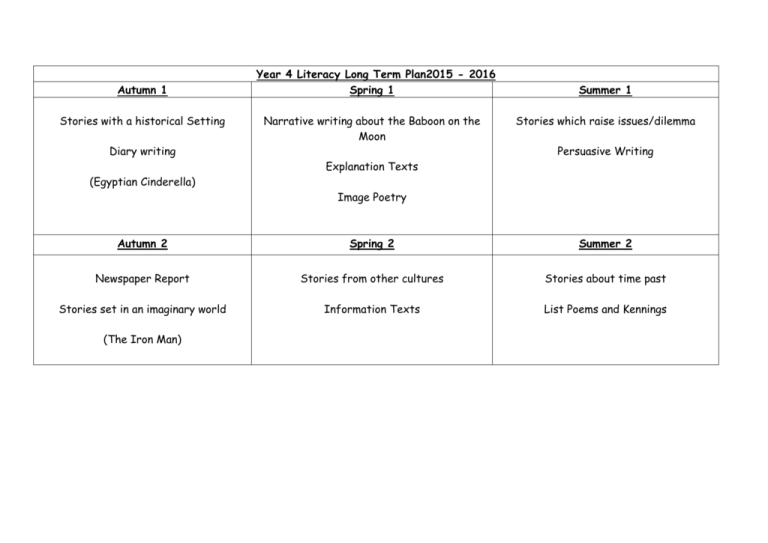
Autumn 1 Stories with a historical Setting Diary writing (Egyptian Cinderella) Year 4 Literacy Long Term Plan2015 - 2016 Spring 1 Narrative writing about the Baboon on the Moon Summer 1 Stories which raise issues/dilemma Persuasive Writing Explanation Texts Image Poetry Autumn 2 Spring 2 Summer 2 Newspaper Report Stories from other cultures Stories about time past Stories set in an imaginary world Information Texts List Poems and Kennings (The Iron Man) Grammar Overview Text Structure Sentence Construction Word Structure/Language Punctuation Terminology Consolidate Year 3 list Fiction: Secure use of planning toolse.g. story map, story mountain, story grids, ‘Boxing-up’ grids (story types grids) Plan opening using description/action. Paragraphs – to organise each part of story to indicate a change in place or jump in time. Paragraphs – build in suspense writing to introduce the dilemma. Developed 5 parts to story; introduction, build-up, problem/dilemma, resolution, ending. Clear distinction between resolution and ending Consolidate Year 3 list Types of Sentence: Long and short sentences sentences starting with a simile secure use of simple/embellished simple sentences Secure use of compound sentences(Coordination) Develop complex sentences: Main and subordinate clauses ‘ed’ clauses as starters Expanded ‘ing’ clauses as starters Drop in ‘ing’ clause Sentence of 3 for action Repetition to persuade Dialogue – verb + adverb Consolidate Year 3 list Introduce: Prepositions (at, underneath, since, towards, beneath, beyond) Conditionals (could, should, would) Comparative and superlative adjectives (small, smaller, smallest) (good, better, best) Proper nouns The grammatical difference between plural and possessive Standard English forms for verb inflections instead of local spoken forms Consolidate Year 3 list Introduce: Commas to mark clauses Full punctuation for direct speech (each new speaker on a new line, comma between direct speech and reporting clause) Apostrophes to mark singular and plural possession Consolidate: Finger spaces Letter Word Sentence Full stops Capital letter Question mark Exclamation mark Speech bubble ‘speech marks’ Direct speech Inverted commas Bullet points Apostrophe (contractions only) Commas for sentence of 3 – description, action Colon – instructions Non-Fiction: Secure Reinforce appropriate choice of pronoun and Singular/plural Suffix/prefix Word family Consonant/vowel Adjective/noun Verb/adverb use of planning tools e.g. text map/ washing line/ ‘Boxing-up’ grid Paragraphs – to organise ideas around a theme. Logical organisation. Group related paragraphs. Develop use of a topic sentence. Link information within paragraphs with a range of connectives Use of bullet points, diagrams. Introduction, middle section(s), ending Ending – could include personal opinion, response, extra information, reminders, question, warning, encouragement to the reader Appropriate choice of pronoun or noun across sentences noun within a sentence to avoid ambiguity and repetition Use the term pronoun appropriately and understand the function of pronouns Distinguish personal and possessive pronouns Choose nouns or pronouns appropriately for clarity and cohesion Bossy verb – imperative Tense (past, present, future) Connective Conjunction Preposition Determiner/ generaliser Clause Subordinate clause Relative clause Relative pronoun Alliteration Simile –‘as’/’like’ Synonyms Introduce: Pronoun Possessive pronoun Adverbial Fronted adverbial Apostrophe – possession
